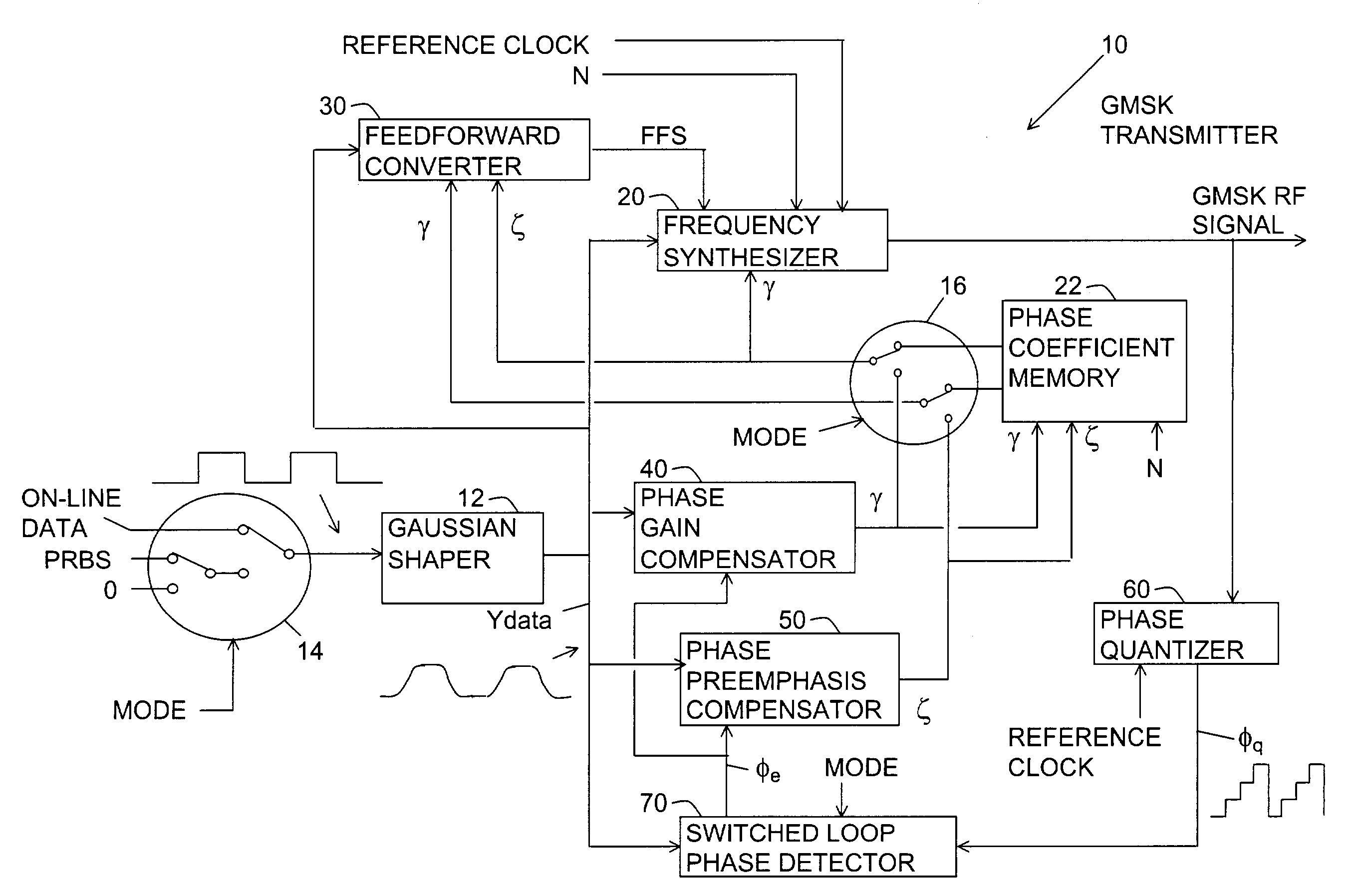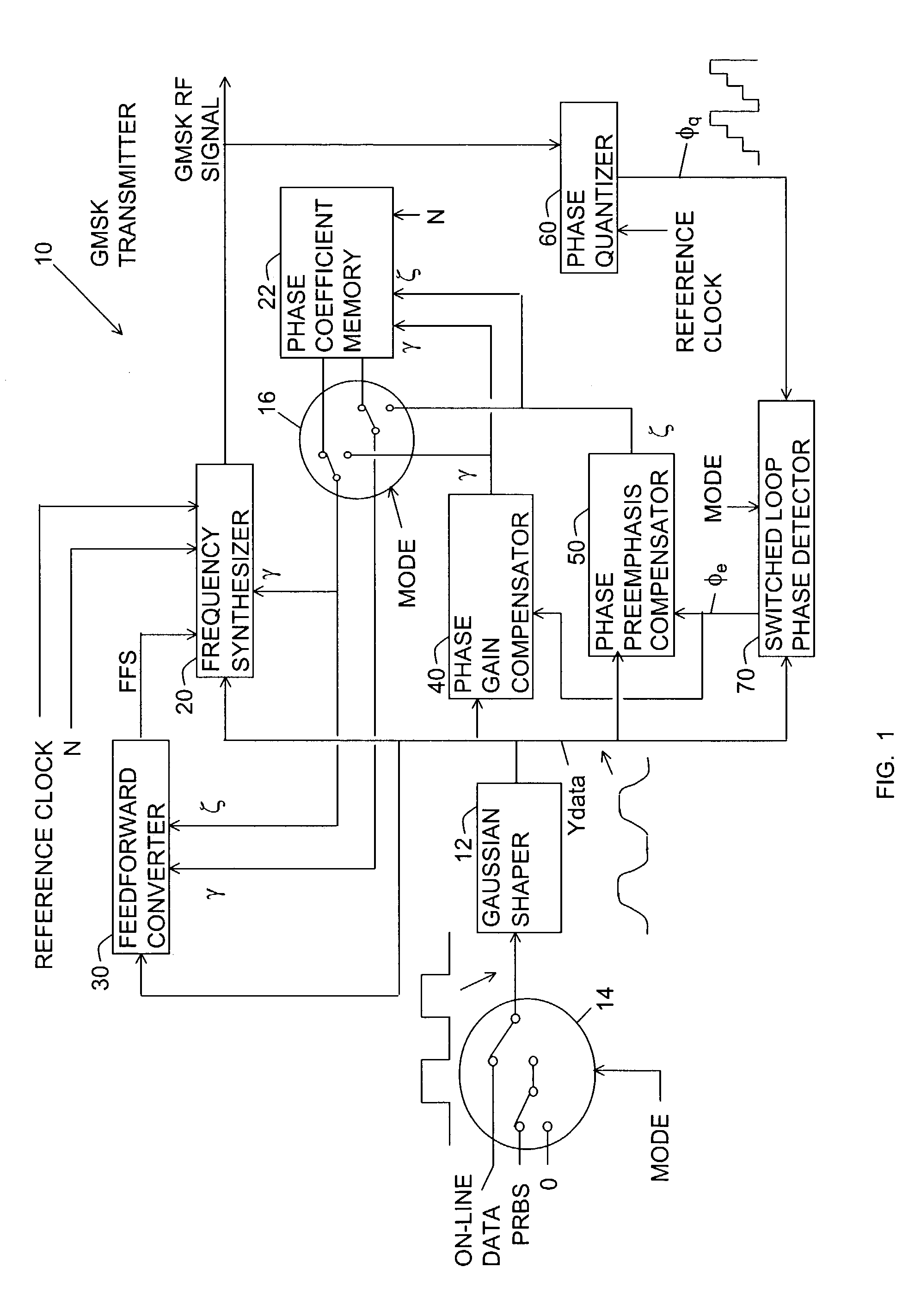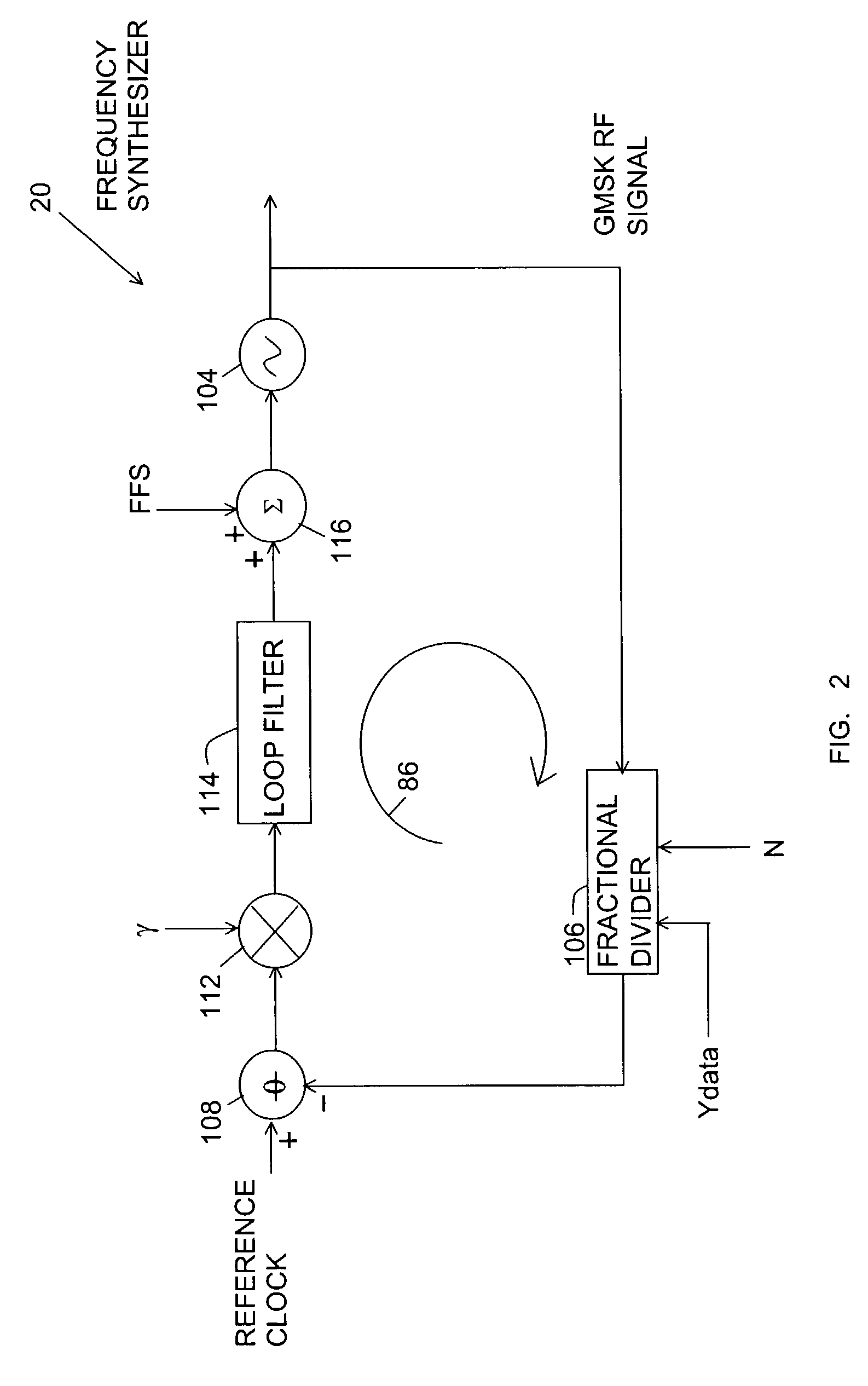Gaussian minimum shift key transmitter with feedforward phase compensation
a phase compensation and gaussian minimum shift technology, applied in the field of frequency shift key (fsk) signal generators, can solve the problems of difficult production of filtering filters for providing gmsk signals, high cost, and inability to use burst mode in practical application, so as to reduce the time for hopping
- Summary
- Abstract
- Description
- Claims
- Application Information
AI Technical Summary
Benefits of technology
Problems solved by technology
Method used
Image
Examples
Embodiment Construction
[0031]FIG. 1 is a block diagram of a Gaussian minimum shift key (GMSK) signal generator or transmitter referred to by the general reference number 10 for providing a radio frequency (RF) GMSK frequency modulated output signal. The GMSK transmitter 10 is described herein as adapted for the Global System for Mobile Communications (GSM). However, the idea of the GMSK transmitter 10 of the present invention can be applied to other systems where the accuracies of the modulation states and the paths of the transitions between the modulation states is important. GSM is also known as Groupe Speciale Mobile.
[0032]The GMSK transmitter 10 includes a Gaussian input data shaper 12, an input mode switch 14, an output mode switch 16, a frequency synthesizer 20, a phase coefficient memory 22, a feedforward converter 30, a phase gain compensator 40, a phase preemphasis compensator 50, a phase quantizer 60, and a switched loop phase detector 70. The GMSK transmitter 10 has two modes: a calibration mo...
PUM
 Login to View More
Login to View More Abstract
Description
Claims
Application Information
 Login to View More
Login to View More - R&D
- Intellectual Property
- Life Sciences
- Materials
- Tech Scout
- Unparalleled Data Quality
- Higher Quality Content
- 60% Fewer Hallucinations
Browse by: Latest US Patents, China's latest patents, Technical Efficacy Thesaurus, Application Domain, Technology Topic, Popular Technical Reports.
© 2025 PatSnap. All rights reserved.Legal|Privacy policy|Modern Slavery Act Transparency Statement|Sitemap|About US| Contact US: help@patsnap.com



